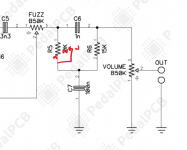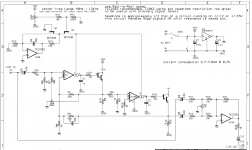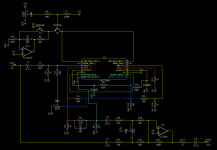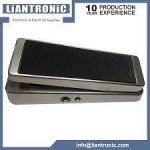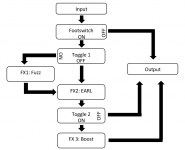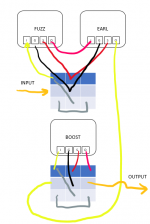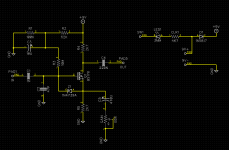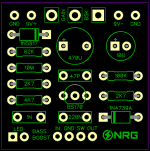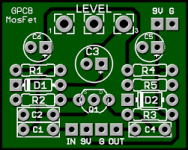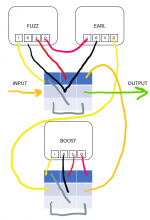Grubb
Well-known member
Not strictly a PedalPCB question, but hopefully someone will weigh in with some ideas. A colleague at the school I work at is a drummer in an alt-rock band in my local area. They are in the sound design process for a cover of Radiohead's Climbing Up the Walls:
The bass guitar is going to do the low synth swells you can hear in the intro/first verse. They would like my help in building an effect that combines a bass-friendly distortion (I'm thinking a Rat-type) with a foot-controlled (wah-style) sweepable low-pass filter that lets highs and distortion back into the signal as the toe is depressed. I'm thinking a clean blend might also be handy to allow the amount of original signal passing through the unit to be controlled. It sounds like it should be pretty achievable.
1. What would you use for this in terms of wah/rocker hardware?
2. Effect order - distortion then low pass?
3. I've seen some simple high-pass filter circuits online, any recommendations for ones that might suit this application?
4. What pot type and value would you be thinking for this?
5. Any PedalPCB boards/mods that might be helpful for this effect?
The bass guitar is going to do the low synth swells you can hear in the intro/first verse. They would like my help in building an effect that combines a bass-friendly distortion (I'm thinking a Rat-type) with a foot-controlled (wah-style) sweepable low-pass filter that lets highs and distortion back into the signal as the toe is depressed. I'm thinking a clean blend might also be handy to allow the amount of original signal passing through the unit to be controlled. It sounds like it should be pretty achievable.
1. What would you use for this in terms of wah/rocker hardware?
2. Effect order - distortion then low pass?
3. I've seen some simple high-pass filter circuits online, any recommendations for ones that might suit this application?
4. What pot type and value would you be thinking for this?
5. Any PedalPCB boards/mods that might be helpful for this effect?


